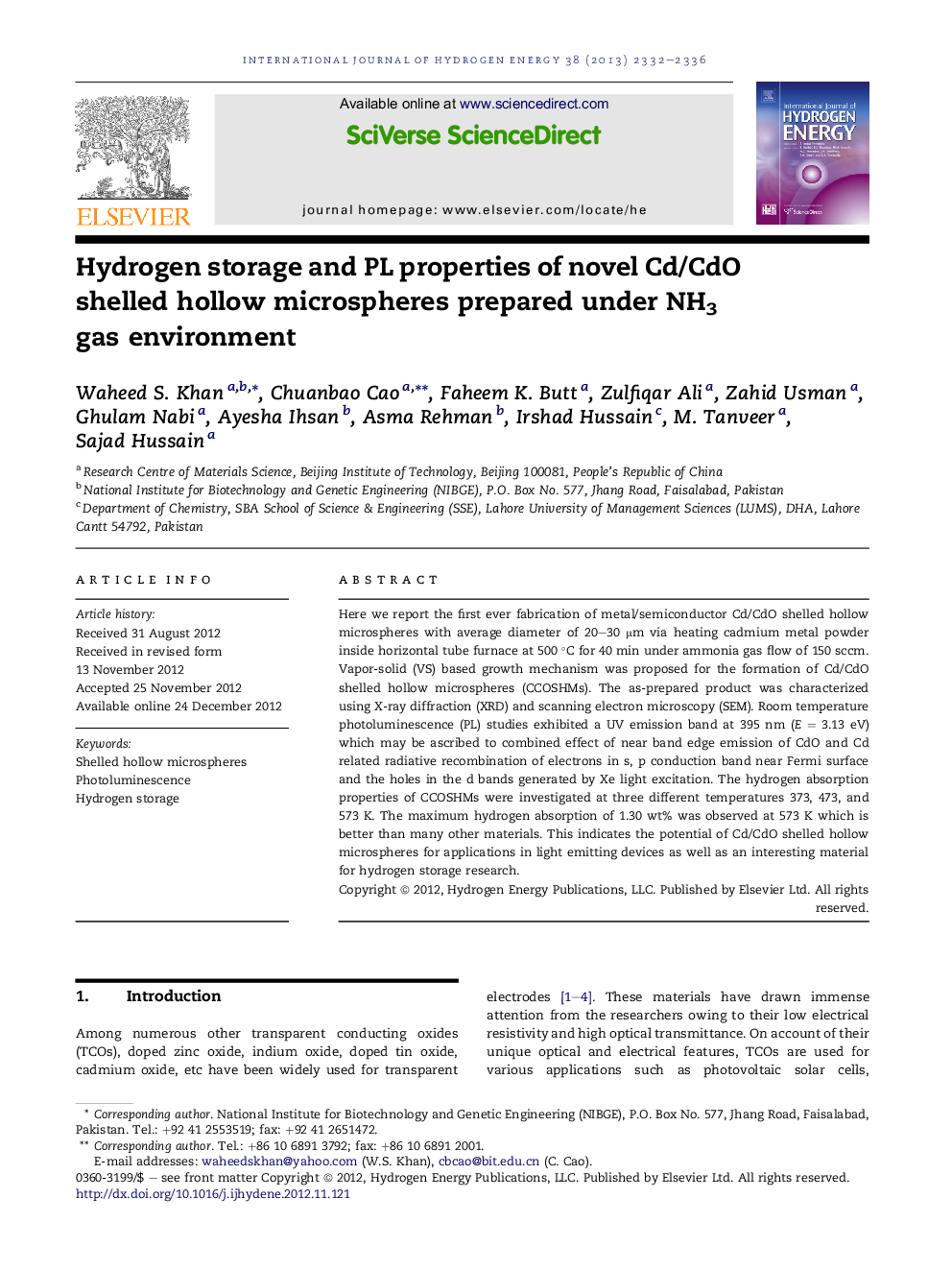| کد مقاله | کد نشریه | سال انتشار | مقاله انگلیسی | نسخه تمام متن |
|---|---|---|---|---|
| 1274097 | 1497540 | 2013 | 5 صفحه PDF | دانلود رایگان |

Here we report the first ever fabrication of metal/semiconductor Cd/CdO shelled hollow microspheres with average diameter of 20–30 μm via heating cadmium metal powder inside horizontal tube furnace at 500 °C for 40 min under ammonia gas flow of 150 sccm. Vapor-solid (VS) based growth mechanism was proposed for the formation of Cd/CdO shelled hollow microspheres (CCOSHMs). The as-prepared product was characterized using X-ray diffraction (XRD) and scanning electron microscopy (SEM). Room temperature photoluminescence (PL) studies exhibited a UV emission band at 395 nm (E = 3.13 eV) which may be ascribed to combined effect of near band edge emission of CdO and Cd related radiative recombination of electrons in s, p conduction band near Fermi surface and the holes in the d bands generated by Xe light excitation. The hydrogen absorption properties of CCOSHMs were investigated at three different temperatures 373, 473, and 573 K. The maximum hydrogen absorption of 1.30 wt% was observed at 573 K which is better than many other materials. This indicates the potential of Cd/CdO shelled hollow microspheres for applications in light emitting devices as well as an interesting material for hydrogen storage research.
Figure optionsDownload as PowerPoint slideHighlights
► Cd/CdO shelled hollow microspheres (CCOSHMs) are prepared first ever time.
► Hydrogen absorption of 1.30 wt% was observed at 573 K for CCOSHMs.
► Vapor solid process mechanism based growth model governs the formation of CCOSHMs.
► Room temperature PL spectrum of CCOSHMs exhibited a near-violet emission band at 395 nm.
Journal: International Journal of Hydrogen Energy - Volume 38, Issue 5, 19 February 2013, Pages 2332–2336